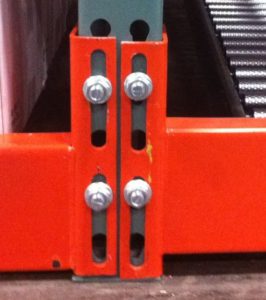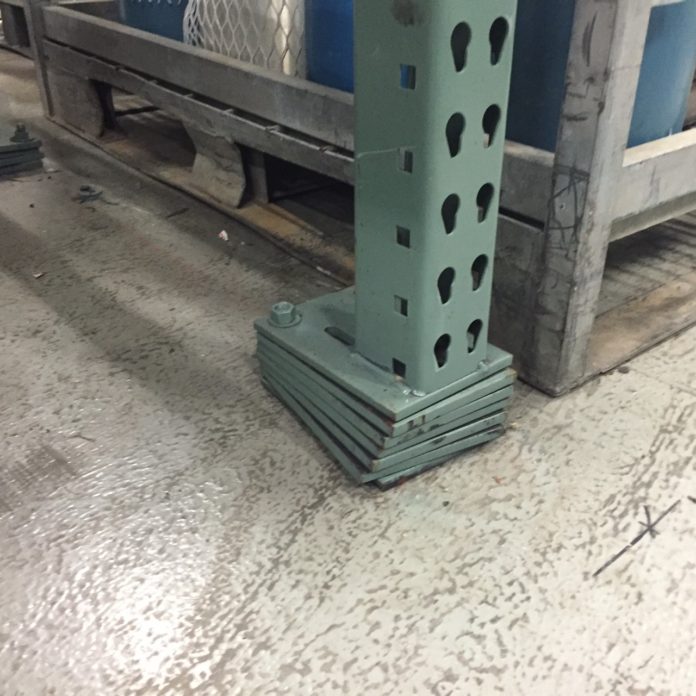Pallet Rack users often do not find out until the installation phase of a project that the warehouse floor is not level. Even with the uneven floor, the rack must still be installed plumb and all of the beams must be level enough so they seat properly.
Whether the slope of the floor is in the cross-aisle or down-aisle direction, shims are normally used to achieve a plumb install of the rack frames.
The height of the shim-packs should not exceed the vertical increment of adjustability of the frame. When this height is exceeded the installer can always just use the next increment of adjustment.
Example: A teardrop rack has 2” of vertical adjustment. If the shim requirement for level is 2-1/8” the installer would shim 1/8”, and use the next hole up on the column to level.

Some bolted styles of rack connectors can allow the rack to travel with the floor slope in the down-aisle directions to varying degrees. An “infinitely adjustable” angle on the beams can help with plumbing adjustments and make shelves level. As previously stated, all of the beams must be properly connected and all frames must be plumb.
What should be done about high shim packs?
The RMI Specification defines three possible conditions:
1.) For shim packs that are less than 2 times the diameter of the anchor, there is no requirement to “lock” the shims together by welding or installing a second anchor.
2.) For shim packs that are between 2 times but less than 6 times the diameter of the anchor, there is a requirement to “lock” the shims together by welding or adding a second anchor.
3.) Shim packs that are greater than 6 times the anchor diameter are not permitted.
One very important thing to remember is that longer anchor bolts may be needed to achieve the required anchor bolt embedment for those cases where shim stacks are used.
A common problem with shim packs that are too high and not welded or fastened with a second anchor is shim “spin-out.” This can lead to instability of the racking system.
